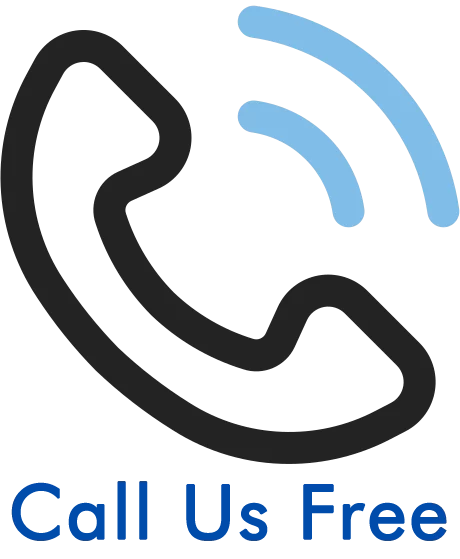How To Claim For Phototherapy Negligence
Phototherapy Negligence Claims Guide
This is an informative guide to the steps you could take following the occurrence of phototherapy negligence. Phototherapy can be a form of medical treatment using ultraviolet light. There are two types of phototherapy: UVA and UVB. UVA requires you to take medication before the light treatment, this is referred to as PUVA, whereas UVB is a simple form of phototherapy. It may be used to treat some skin conditions, such as psoriasis, eczema and acute dermatitis.
As we move through this guide, we will explain the duty of care that all medical professionals owe to their patients and the potential harm that could be caused if this is breached. What’s more, we will outline the eligibility criteria that must be met to bring forward a medical negligence compensation claim and explain the evidence you could obtain in support of your case.
Also, we will discuss how legal professionals can calculate the compensation award for a successful phototherapy negligence claim. Toward the end of the guide, we will explain how you could access the services of a solicitor without the requirement to pay any upfront or ongoing fees for their services.
You can also contact our team at UK Law to make an enquiry related to your potential medical negligence claim. They are available to provide you with a free consultation at a time that best suits you, as they are on hand 24/7.
You can:
- Call us on 020 3870 4868
- Contact us via our online form
- Write to an advisor using the live chat window on this page
Select A Section
- How To Claim For Phototherapy Negligence
- How Does Medical Negligence Occur?
- Proving That A Medical Professional Acted Negligently
- Phototherapy Negligence Claim Payouts
- No Win No Fee Phototherapy Negligence Claims?
- Further Guides To Medical Negligence Claims
How To Claim For Phototherapy Negligence
All medical professionals, including dermatologists, owe their patients a duty of care. This means that they must provide the correct standard of care. If phototherapy is prescribed by a medical professional and provided in a medical setting, then you are owed a duty of care by the health care providers. Below we will outline the conditions that must be met to have valid grounds to make a medical negligence claim:
- Firstly, a medical professional owed you a duty of care.
- Secondly, they breached this duty of care.
- As a result of the breach, you sustained avoidable harm.
This is the definition of medical negligence. The avoidable harm that could be sustained due to a medical professional being in breach of their duty of care includes harm to your mental health, physical suffering and a worsened condition.
This criteria of eligibility shows that not all cases of phototherapy causing harm will lead to a compensation claim. The medical professional must have provided the incorrect standard of care, causing harm that could have been avoided.
Please continue reading to learn about the time limits applicable to compensation claims for phototherapy negligence. These are important to consider when determining whether you may have valid grounds to claim compensation.
Time Limits To Claim For Phototherapy Negligence
The Limitation Act 1980 outlines the medical negligence limitation periods in which you must initiate legal proceedings. This means your claim must begin within three years of the date that the medical negligence took place or the date of knowledge, this can be when you connected the harm you suffered to medical negligence.
There are certain circumstances where exceptions can be made to these time limits. If you would like to enquire about these in connection to your phototherapy negligence claim, please speak to one of our advisors. They can provide insight into both medical negligence claims time limits and your eligibility to pursue compensation.
How Does Medical Negligence Occur?
There are various different ways that medical negligence could occur in relation to phototherapy treatment. Below we will provide some potential examples:
- You are prescribed phototherapy to treat eczema. However, the medical professional fails to check your medical history and therefore does not realise that you are already taking medication that increases your sensitivity to UV light, leading to you having an extreme reaction to the phototherapy treatment. This could cause burns, blisters and unexpected scarring.
- A newborn baby is given phototherapy for neonatal jaundice. The doctor performing the phototherapy fails to monitor the baby’s temperature and hydration. This leads to the baby becoming too hot and suffering from dehydration, which can be dangerous for a newborn baby and cause them harm.
- You are not provided with goggles while having your treatment or advice about wearing dark glasses after your treatment. Therefore, when you take medication that increases your sensitivity to light, you are unaware that you may need to protect your eyes from sunlight. This could lead to harmful effects on your sight.
Proving That A Medical Professional Acted Negligently
After you have sustained avoidable harm due to phototherapy negligence, it is important that you first receive the correct medical treatment. Then, if you want to make a compensation claim and you meet the eligibility criteria, you must acquire evidence as a means of proving medical negligence.
This evidence could include:
- A diary of your treatment and symptoms
- A copy of your medical records, including any test results
- Potential witness contact information
- Any prescriptions
To help determine whether a medical professional failed to provide you with the correct standard of care, the Bolam test may be useful. This is where a group of relevantly trained medical professionals assess the standard of care that you received. If the findings from this test support your case, they could be used to strengthen your claim.
Please contact our team to enquire about the evidence you could use to support your claim.
Phototherapy Negligence Claim Payouts
If you were to make a successful compensation claim for the avoidable harm you suffered due to phototherapy negligence, you could receive up to two types of damages: special and general damages.
General damages cover the medical negligence. As a guide to general damages, we have created the table below using the Judicial College Guidelines (JCG). This is a document that medical negligence solicitors can use to assist them in the valuation of general damages. Please consider the brackets in the table as a guide and not an exact representation of what you would receive for a successful claim.
Guideline Compensation Table
| Type of Harm | Severity | Notes on this Harm | Guideline Compensation Brackets |
|---|---|---|---|
| Affecting Sight | Total Blindness (b) | The person will be completely blind. | In the region of £268,720 |
| Affecting Sight | Sight is Lost in One Eye and Reduced in the Remaining Eye (c)(ii) | Vision will be reduced in the remaining eye, and/or there will be problems, such as double vision. | £63,950 to £105,990 |
| Affecting Sight | Minor Permanent Impairment of Vision (g) | This could affect one or both eyes and includes permanent bright light sensitivity that is not severe enough to necessitate the constant use of dark glasses. | £9,110 to £20,980 |
| Scarring to Other Parts of the Body | Burns 40% or more of the body. | The award amount will consider various factors, such as the percentage of the body area affected by burns, the cosmetic impact, and the psychological impact. | Likely to exceed £104,830 |
| Facial Scarring | Very Severe (a) | The person will be relatively young, and the cosmetic effect of the scarring will be very disfiguring. It will lead to a severe psychological reaction. | £29,780 to £97,330 |
| Facial Scarring | Less Severe (b) | There will be substantial disfigurement and a significant psychological reaction. | £17,960 to £48,420 |
| Facial Scarring | Significant (c) | Plastic surgery will reduce the worst effects, leaving some cosmetic disability. The psychological reaction will not be great or will have diminished. | £9,110 to £30,090 |
Special Damages Awarded In Clinical Negligence Cases
In the case of a successful compensation claim for phototherapy negligence, you could also receive special damages. This compensates for the monetary losses incurred as a result of the medical negligence. This could include:
- Care costs
- Loss of earnings
- Travel costs
- Housing adaptations
It is important that you can provide evidence of these losses, such as payslips, invoices or receipts.
If you would like to enquire about a personalised estimate of the compensation you could be eligible to receive, please speak to a member of our team.
No Win No Fee Phototherapy Negligence Claims?
Our friendly advisors at UK Law can provide you with a free evaluation of your potential phototherapy negligence claim. If they find you may be eligible to bring forward a claim, they could put you in contact with one of the No Win No Fee medical negligence solicitors from our panel.
A No Win No Fee solicitor could present you with the offer to work on your medical negligence claim under a Conditional Fee Agreement (CFA). This would help you to access the services of a solicitor without paying for their services at the following times:
- Upfront
- For the duration of your ongoing claim
- If your claim resolves unsuccessfully
If your claim should succeed, on the other hand, your medical negligence solicitor could take a small percentage of the compensation. This is a success fee capped by law.
How To Contact Us
Please don’t hesitate to get in contact with one of our advisors. They are available 24 hours a day, 7 days a week, to discuss your claim and offer guidance.
To get in touch, you can:
- Call us on 020 3870 4868
- Fill out our online form for a call back
- Write to an advisor using the live chat window on this page
Further Guides To Medical Negligence Claims
Please explore more of our medical negligence claim guides:
- Can I Claim Compensation For Drug Errors?
- My Doctor Prescribed The Wrong Medication, Could I Claim?
- Examples Of Types Of Medication Errors
Also, take a look at the following external sources:
- NHS – When to use NHS 111 online or call 111
- NHS – Psoriasis
- General Medical Council – Good medical practice
Thank you for reading this guide on when you could be eligible to claim compensation for phototherapy negligence. If you are left with any questions relating to your potential medical negligence claim, please don’t hesitate to speak to a member of our team by using the details provided in this guide.




